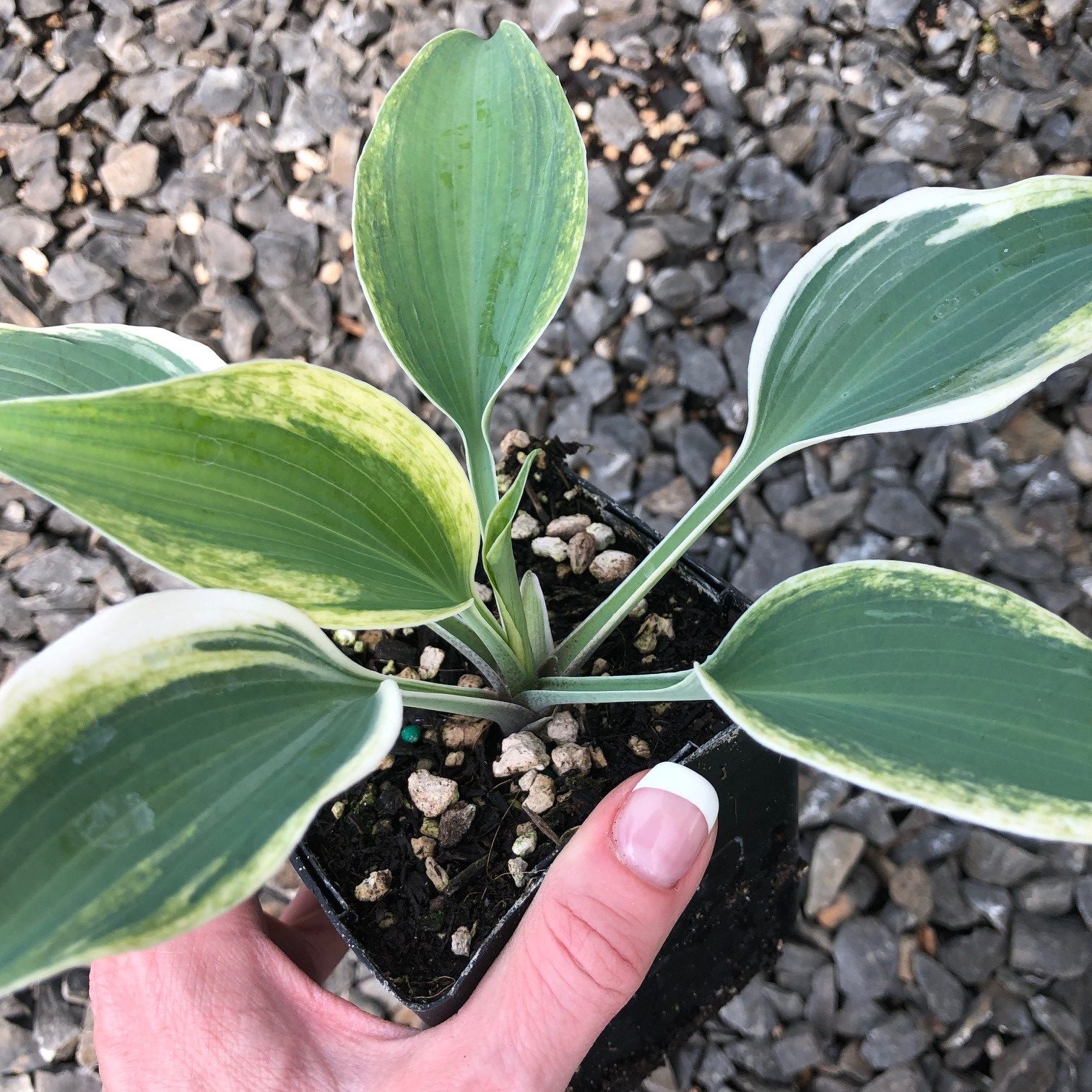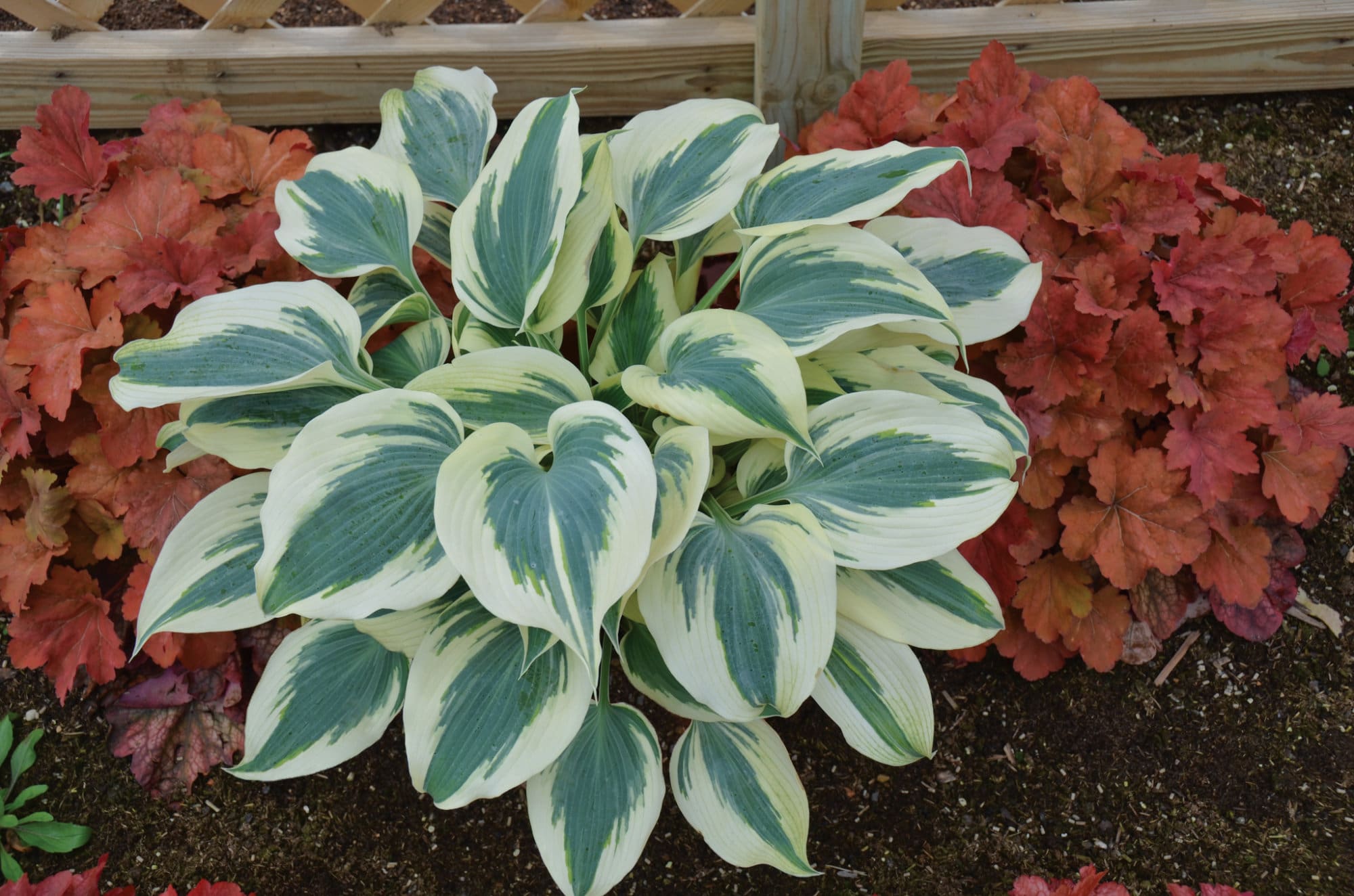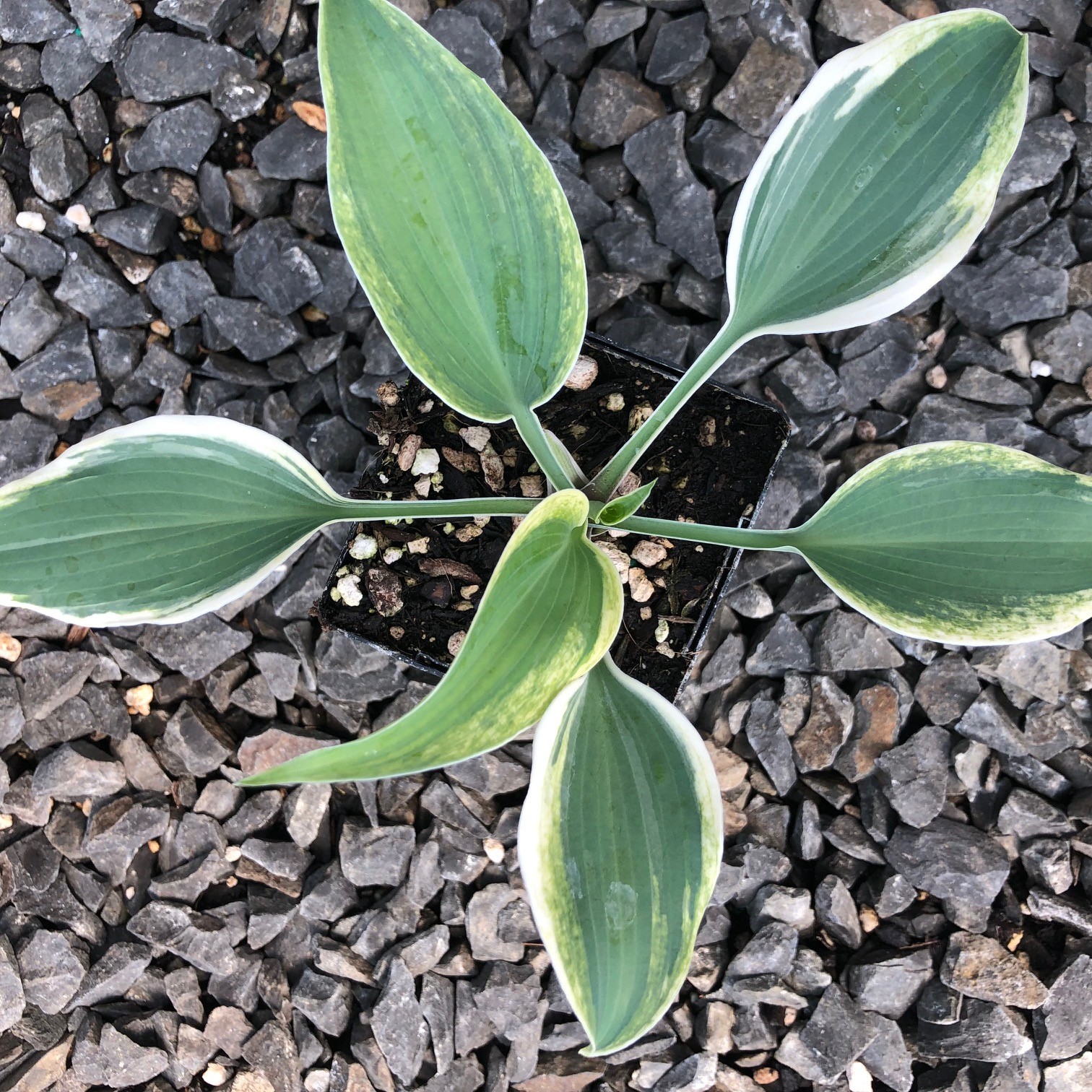Blue ivory hosta plant – Unveiling the captivating world of the Blue Ivory hosta, this guide delves into the intricate details of this remarkable plant, showcasing its exquisite foliage, unique characteristics, and essential cultivation practices.
With its striking blue-green leaves and elegant form, the Blue Ivory hosta stands out as a horticultural masterpiece, adding a touch of sophistication and tranquility to any landscape.
Botanical Description: Blue Ivory Hosta Plant

The Blue Ivory hosta plant (Hosta ‘Blue Ivory’) is a striking perennial that adds a touch of elegance to any garden. This medium-sized hosta typically reaches a height of 12-18 inches and forms a dense mound with a spread of 24-36 inches.
The most distinctive feature of the Blue Ivory hosta is its foliage. The leaves are large, heart-shaped, and have a unique blue-green color that gives the plant its name. The leaves have a slightly corrugated texture and are held on upright petioles.
Flowering Characteristics
While the foliage is the main attraction of the Blue Ivory hosta, it does produce flowers in the summer. The flowers are lavender in color and are borne on tall, slender scapes. The flowers are not particularly showy, but they do add a touch of interest to the plant.
Cultivation and Care

Growing and caring for Blue Ivory hostas is relatively easy, making them a popular choice for gardeners of all levels. They prefer well-drained, moist soil rich in organic matter. They thrive in partial shade to full shade, with protection from hot afternoon sun.
Soil Conditions
Blue Ivory hostas prefer well-drained soil with a pH between 6.0 and 7.0. The soil should be rich in organic matter, such as compost or peat moss, to help retain moisture and nutrients.
Light Requirements
Blue Ivory hostas grow best in partial shade to full shade. They can tolerate some morning sun, but they should be protected from the hot afternoon sun. If the plants are exposed to too much sun, the leaves can scorch and turn brown.
Watering Needs
Blue Ivory hostas need to be watered regularly, especially during hot, dry weather. The soil should be kept moist but not soggy. Overwatering can lead to root rot.
Pests and Diseases
Blue Ivory hostas are generally resistant to pests and diseases. However, they can be susceptible to slugs and snails, which can eat the leaves. To prevent this, you can use slug bait or sprinkle diatomaceous earth around the plants. Blue Ivory hostas can also be affected by leaf spot, a fungal disease that causes brown spots on the leaves. To prevent this, you can water the plants at the base of the plant, avoiding getting the leaves wet.
Landscape Uses and Design Ideas

Blue Ivory hosta plants add a touch of elegance and charm to any landscape. Their silvery-blue foliage provides a striking contrast to other plants, making them a focal point in gardens and borders. Blue Ivory hostas are also versatile and can be used in various landscape designs, from traditional to contemporary.
Companion Planting, Blue ivory hosta plant
Blue Ivory hostas pair well with other shade-loving plants such as ferns, astilbes, and heucheras. They can also be planted under trees or shrubs to create a lush and inviting groundcover.
Specimen Planting
Blue Ivory hostas make excellent specimen plants due to their unique foliage and compact size. They can be planted in containers or in the ground as a focal point in a small garden or patio.
Mass Planting
Planting Blue Ivory hostas in mass creates a stunning effect, especially when used as a groundcover or border. The silvery-blue foliage forms a dense carpet that adds interest and texture to the landscape.
Comparison with Other Hosta Varieties
Blue Ivory hosta stands out among other hosta varieties due to its unique foliage and compact size. The following table compares Blue Ivory with three other popular hosta varieties:
| Feature | Blue Ivory | Blue Angel | Blue Cadet | Halcyon |
|—|—|—|—|—|
| Foliage Color | Silvery-blue | Blue-green | Blue-green | Blue-green |
| Foliage Shape | Oblong | Oblong | Oval | Heart-shaped |
| Size | Compact | Large | Medium | Medium |
| Growth Rate | Moderate | Fast | Fast | Slow |
| Uses | Specimen, mass planting, groundcover | Specimen, mass planting | Specimen, mass planting | Specimen, shade gardening |